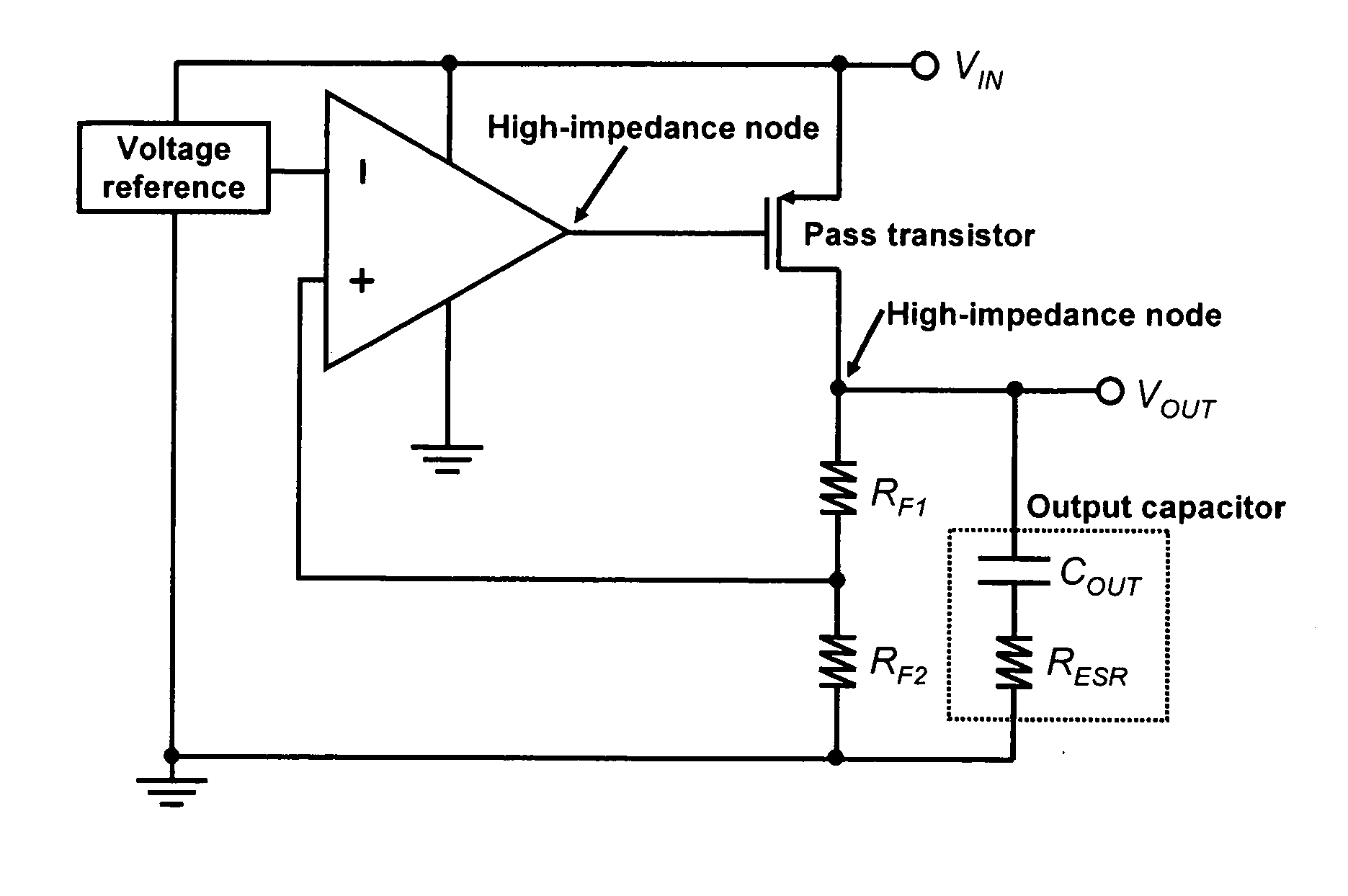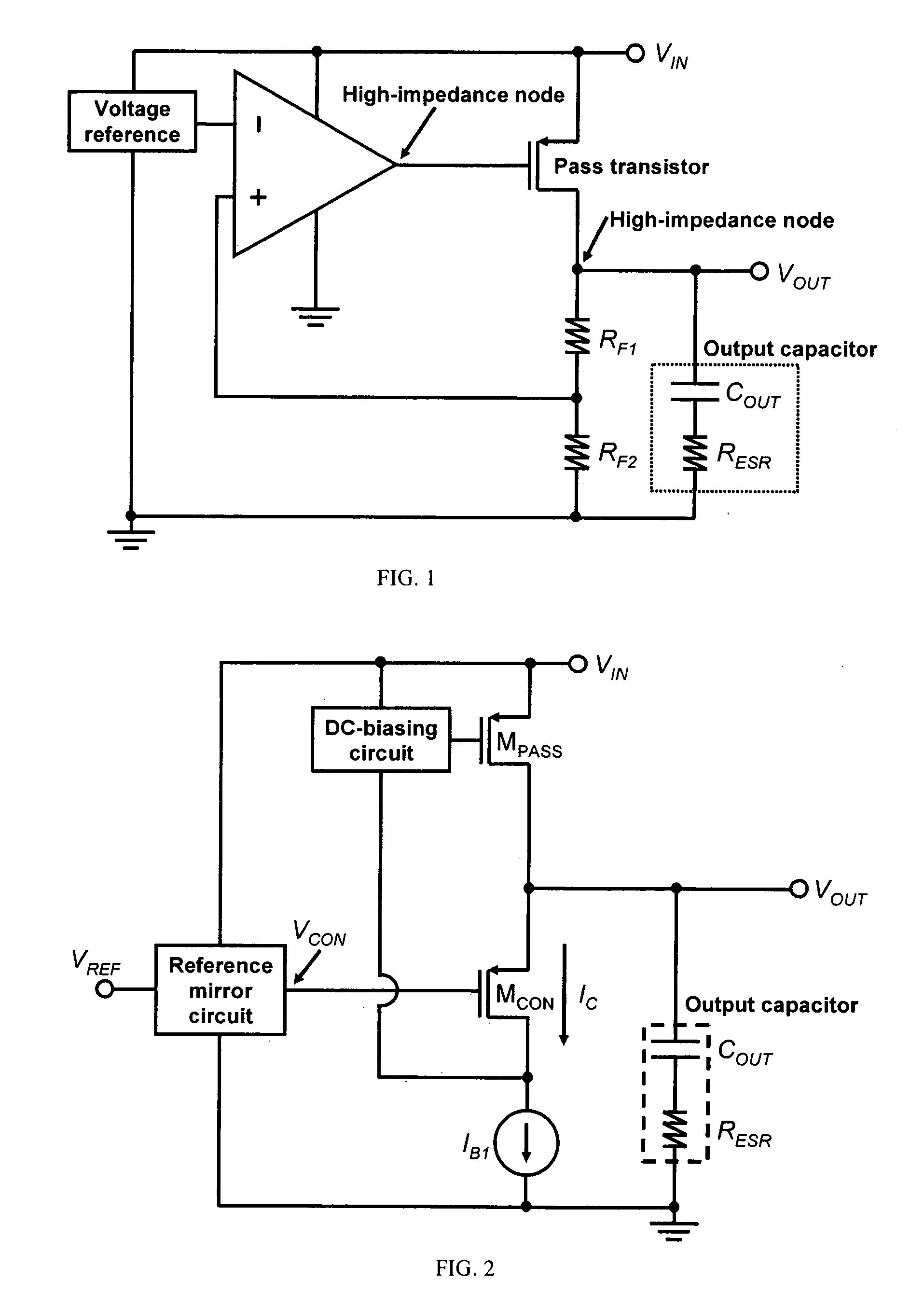Single-transistor-control low-dropout regulator
a regulator and single-transistor technology, applied in the direction of electric variable regulation, process and machine control, instruments, etc., can solve the problems of ldo regulator stability, limiting the choice of output capacitance combinations, and difficult optimization between stability and transient respons
- Summary
- Abstract
- Description
- Claims
- Application Information
AI Technical Summary
Benefits of technology
Problems solved by technology
Method used
Image
Examples
Embodiment Construction
[0035] This invention provides a LDO regulator with improved transient response and stability based on the concept of providing ultra-low resistance, which can be dynamically changed according to VOUT, at the output of the LDO regulator, even though the pass transistor itself has high output resistance.
[0036]FIG. 2 shows the basic structure of an embodiment of the LDO regulator in accordance with this invention, including a pass transistor MPASS, a control transistor MCON, a DC-biasing circuit, a reference mirror circuit, a first biasing-current source IB1 and an optional output capacitor. MPASS is interposed between VIN and VOUT. The gate electrode of MPASS is coupled to one end of the DC-biasing circuit. The source electrode of MCON is connected to VOUT. The gate electrode of MCON is biased by a control voltage VCON, which is generated by the reference mirror circuit. The drain electrode of MCON is coupled to one end of the current source and one end of the DC-biasing circuit. An...
PUM
 Login to View More
Login to View More Abstract
Description
Claims
Application Information
 Login to View More
Login to View More - R&D
- Intellectual Property
- Life Sciences
- Materials
- Tech Scout
- Unparalleled Data Quality
- Higher Quality Content
- 60% Fewer Hallucinations
Browse by: Latest US Patents, China's latest patents, Technical Efficacy Thesaurus, Application Domain, Technology Topic, Popular Technical Reports.
© 2025 PatSnap. All rights reserved.Legal|Privacy policy|Modern Slavery Act Transparency Statement|Sitemap|About US| Contact US: help@patsnap.com



